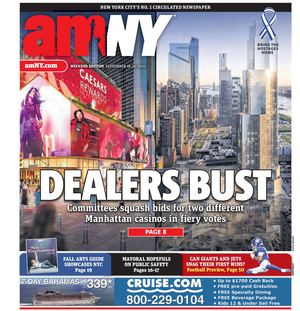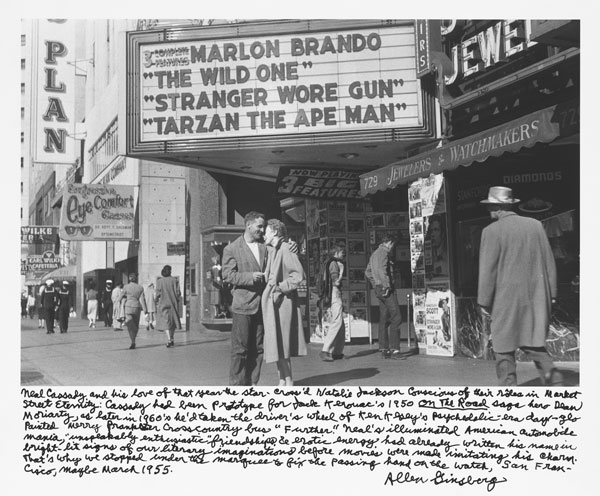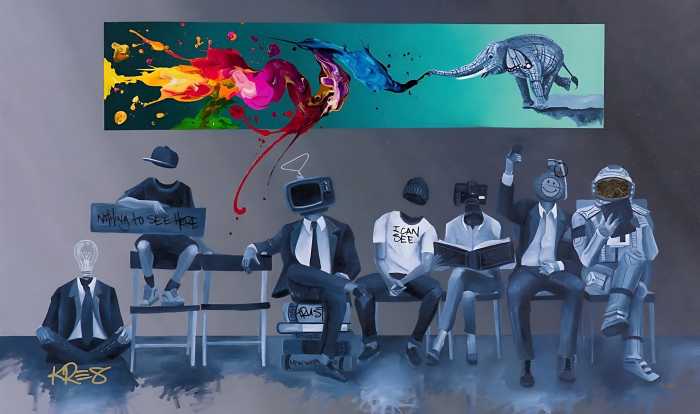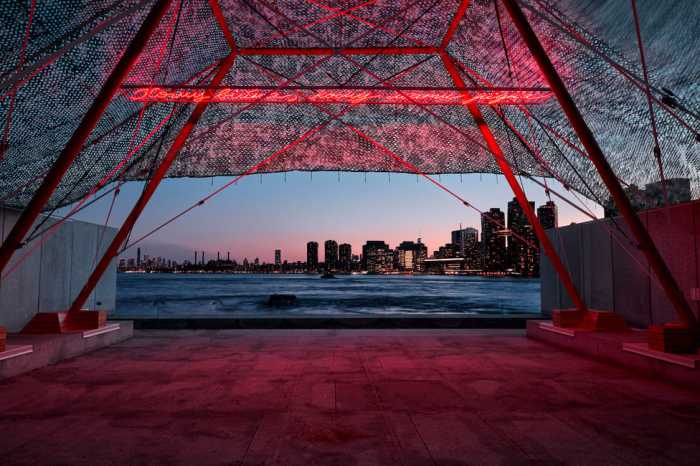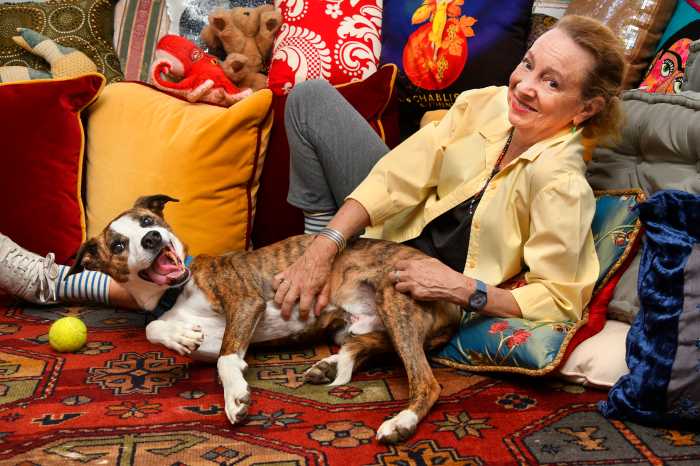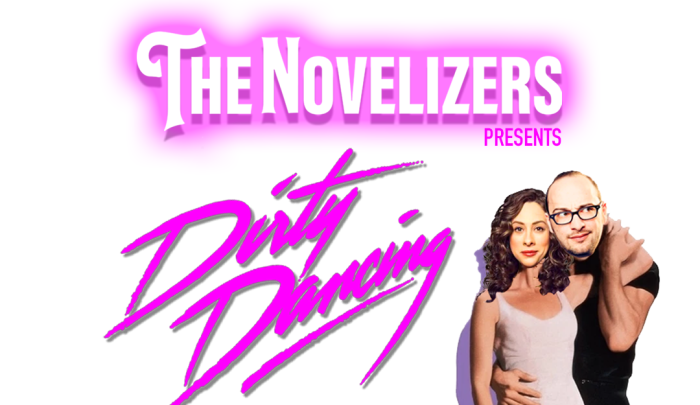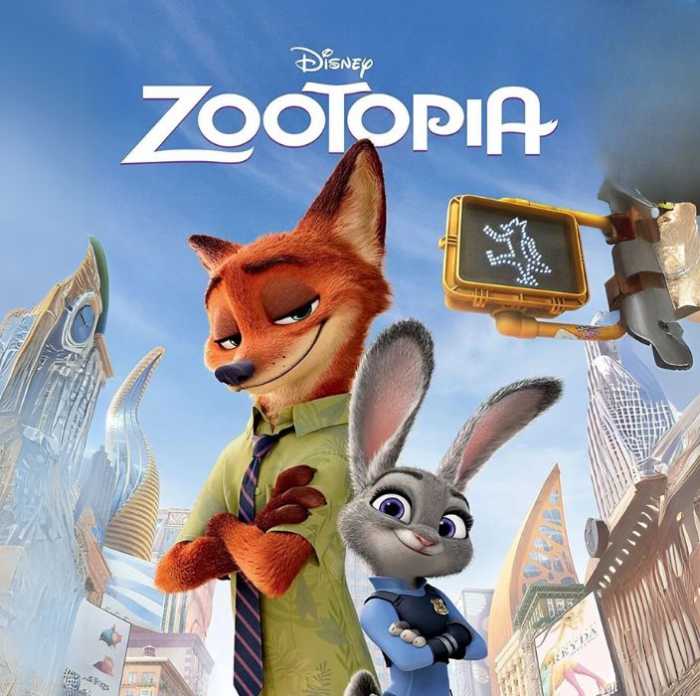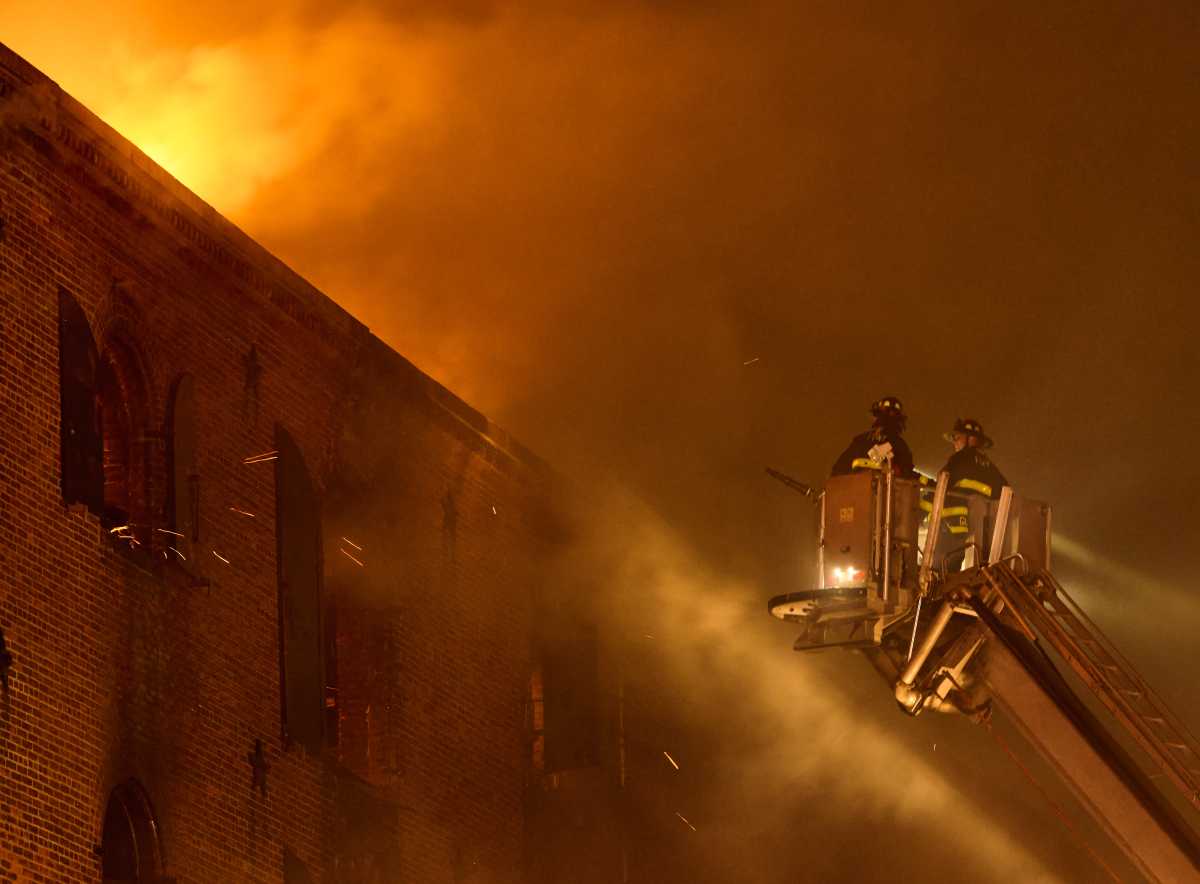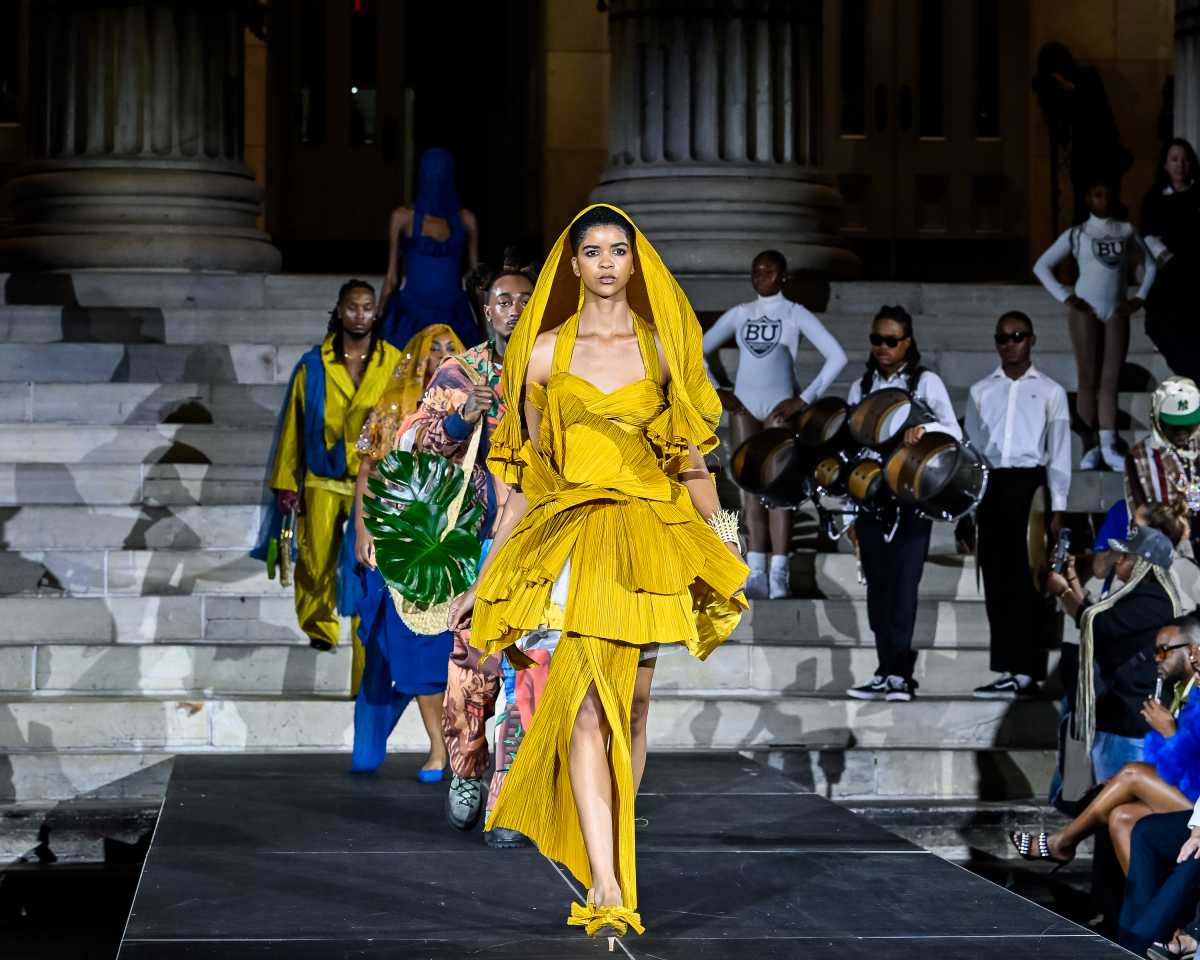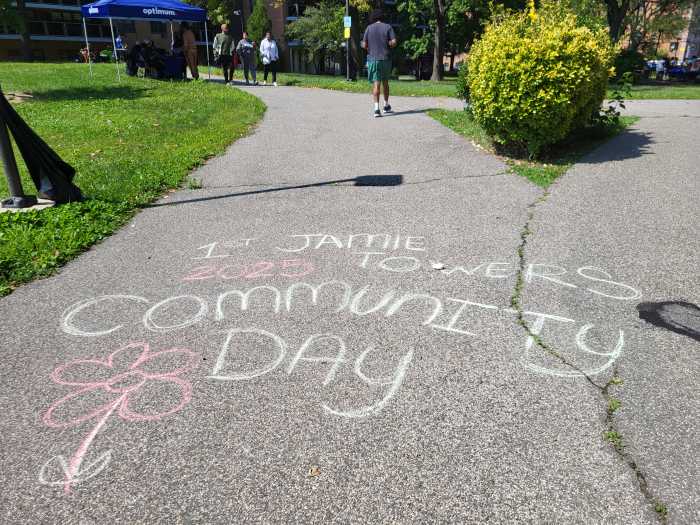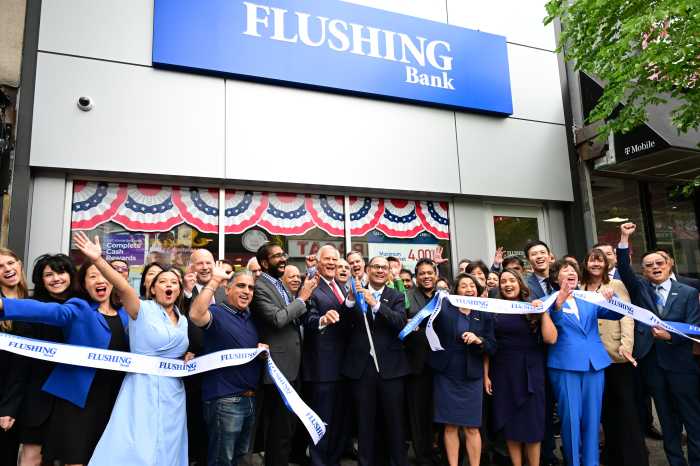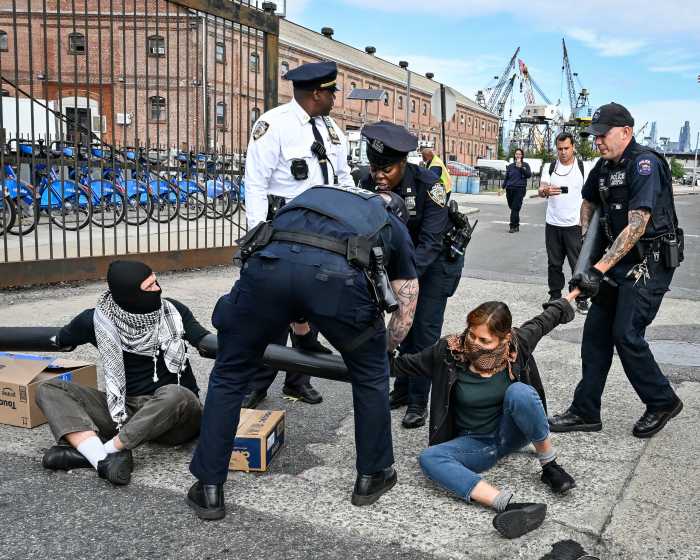Exhibitions draw upon interviews, intimate snapshots
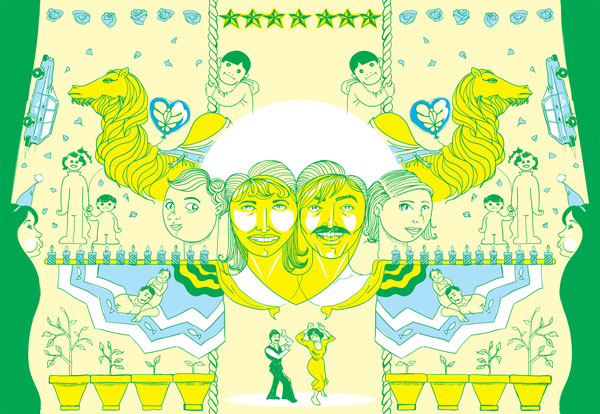
Ganzeer: “Utopia” (2013). See “Open Sesame.”
Open Sesame
In this exhibition, organizer Ola El-Khalidi revisits the Iraqi invasion of Kuwait, which happened on August 2, 1990. The Gulf wars that ensued contributed to the violence that is still very much a part of the region today and which shaped the lives of a whole generation. El-Khalidi refers to the latter as the Open Sesame generation and discusses how the then-teenagers experienced a sudden loss of youth. Gathering witness accounts and mementos, the assembled artists in the exhibition — Ganzeer, Jeanno Gaussi, Rheim Alkadhi and Makan Collective — provide a moving voice for this lost generation.
Through March 2, at apexart (291 Church St., btw. Walker & White Sts.). Hours: Tues.-Sat., 11am-6pm. Cal1 212-431-5270 or visit apexart.org.
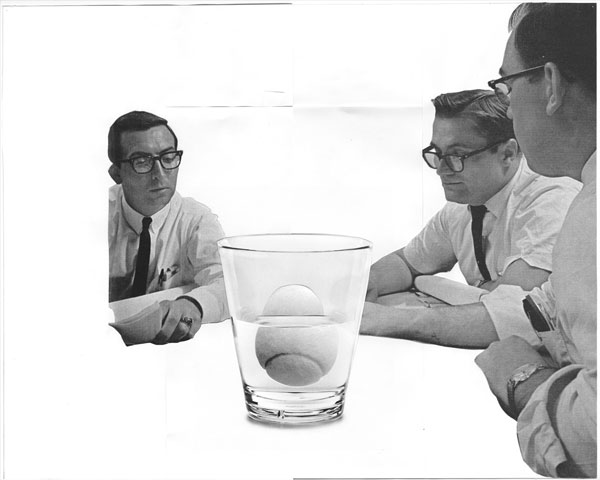
Alexandre Singh: “Assembly Instructions (The Pledge-Leah Kelly).” 2011. Framed inkjet ultrachrome archival prints and dotted pencil lines, 18 x 24 inches, #6 from a set of 37.
Alexandre Singh: The Pledge
Curated by Claire Gilman, this first North American museum exhibition of Singh’s work presents a new series of Assembly Instructions. This project takes interviews that the artist conducted throughout 2011 with noted scientists, artists, writers and filmmakers, and transforms them into fictional dialogues visualized according to Singh’s signature format of collaged photocopies connected by hand-drawn pencil dots on the wall. Filling the entire Main Gallery, Singh’s “interviews” explore drawing not only as a form of physical gesture, but also as a graphic conduit for the intellectual process.
Through March 13, at The Drawing Center (35 Wooster St., btw. Grand & Wooster Sts.). Hours: Wed., Fri., Sat., 12-6pm; Thurs., 12-8pm. Call 212-219-2166 or visit drawingcenter.org.
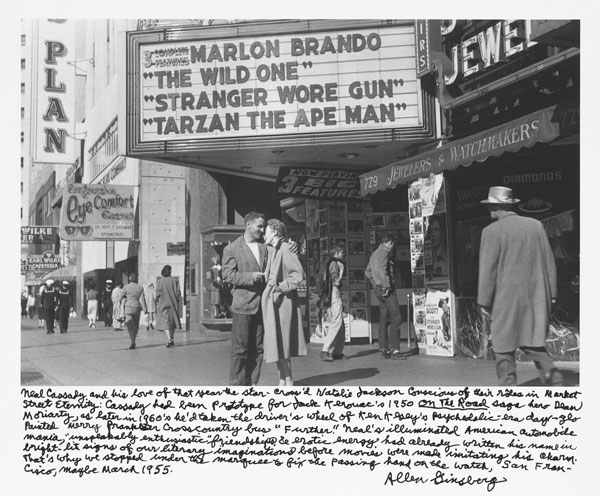
Gelatin silver print, printed 1984–97 (9 7/8 x 14 7/8 in., 24.9 x 38 cm). National Gallery of Art, Gift of Gary S. Davis.
Neal Cassady and his love of that year the star-cross’d Natalie Jackson conscious of their roles in Market Street Eternity: Cassady had been prototype for Jack Kerouac’s 1950 On the Road saga hero Dean Moriarty, as later in 1960’s he’d taken the driver’s wheel of Ken Kesey’s psychedelic-era day-glo painted Merry Prankster crosscountry bus “Further.” Neal’s illuminated American automobile mania, “unspeakably enthusiastic” friendship & erotic energy had already written his name in bright-lit signs of our literary imaginations before movies were made imitating his charm. That’s why we stopped under the marquee to fix the passing hand on the watch, San Francisco, maybe March 1955. —Allen Ginsberg
Beat Memories: The Photographs of Allen Ginsberg
Who could imagine a better look at the Beat Generation than through the lens of Allen Ginsberg (1926–1997). Although known primarily for his poetry, Ginsberg was also an avid photographer, capturing the individuals and places around him in a series of intimate snapshots. The black and white photographs on display include portraits of William S. Burroughs, Neal Cassady, Gregory Corso, Jack Kerouac, as well as several self-portraits. Conveying a glimpse of the unique lifestyle and spirit of the Beats, Ginsberg’s images tell of a generation in which spontaneity and a lust for life began to boil.
Through April 6, at Grey Art Gallery (100 Washington Square East, btw. Waverly & Washington Place). Hours: Tues., Thurs., Fri, 11am-6pm; Wed., 11am-8pm; Sat., 11am-5pm. Call 212-998-6780 or visit nyu.edu/greyart.
BY STEPHANIE BUHMANN
